First up, let me put it out there that I have absolutely no intention of becomming a yarn dyer. There are so many incredible dyers out there and I could never hope to attain the levels of greatness that they can achieve.
That said, I have a hunger to understand crafting skills and processes. I am very inquisitive and this all leads to me dabbling in lots of things - possibly too many! Dyeing is my latest finger in pie action and it doesn't have to stop at wool and yarns, you can try fabrics too.
So although I don't want to become a yarn dyer, what I am excited by is being able to dye up the 10g of just the right brown that I need for a colourwork project or 500g of the right shade of blue for a jumper...
To my current knowledge you can split yarn dyeing into three main categories:
- natural dyes (things taken from nature)
- food colourants such as icing or cake colourants or KoolAid
- professional dyes (often referred to as acid dyes)
I have now tried all three and I want to share the results with you in this blog post. As I have said, I am not an expert and at the end I will provide lots of links to other blog posts or sites where you can gain more detailed information. This will include pointers on Health and Safety - something to be very aware of when you are dyeing yarn or fabric.
My plan is to host #Fridayisdyeday on Instagram whereby other dye-curious folk can see what you can create from the comfort of your kitchen and join in.
The first #Fridayisdyeday is going to be on the 27th October 2017 and my hope is that it becomes a monthly thing (last Friday of every month). I may not be dyeing every month but if not, I will be showing off what I have been making with my dyed yarn.
Natural Dyeing
I was lucky enough to recieve this Natural Dyeing Starter Kit from DT Crafts as a Christmas present. It's a great starter kit containing lots of the standard natural dye stuffs such as madder, logwood, alum, gloves, apron etc. That same Christmas I also received Wild Color: A Complete Guide to Making and Using Natural Dyes by Jenny Dean (I have provided the Amazon link so that you have the ISBN). I subsequently found the Textile Handbook Natural Dyes by Linda Rudkin and between these resources and the internet, I feel like I am very well equiped for natural dyeing.
Using the starter kit I dyed some 100% linen with madder and got a beautiful gradient of colours as I exhausted the dye pot (exhauting means using up all of the dye) and if you add skeins of yarn in gradually each skein will have less dye to soak up and you can get the gradient.
I have recently started attending my local Spinners, Weavers and Dyers Guild (searchfor one locally to you if this is something that you are interested in - I thoroughly recommend it as there is a wealth of knowledge there) and that reignited my dyeing curiosity.
This time, rather than taking to my dye starter kit, I looked to nature to provide the dyestuff and gathered blackberries, acorns, onion skins (brown and red), silver birch bark, an oak gall and had already been saving some daffodil heads. Here are the results and recipes that I used:
For the following, the yarn was soaked the night before in water ( to maximise the uptake of dye) and then alum the next morning (alum is a mordant which helps to fix the dye to the yarn). For the alum I used 8 litres of water and 4 teaspoons of Potassium Aluminium Sulphate.
Blackberries - 200g to dye 100g of skinny Merino 4 ply and 100g of generic undyed wool. Blackberries were blended to a paste, brought to a simmer for 30 minutes, cooled and filtered through a jam seive to capture the liquid. The liquid was used as the dye stock and the yarn was placed in it for 45 minutes prior to letting it cool and rinsing the dye stock off. I could have reached a darker colour by leaving the yarn in the stock overnight but I really liked the silvery purple colour I gained.
Blackberries are 'fugitive' as a dye stock so repeated washing and exposure to sunlight will lead to the dye colour disappearing. The Blackberry dyed skinny Merino has already been made into a shawl which will see very few washes (if any at all) and will be kept in a cupboard when not in use.
It is apparently better to use fresh blackberries but frozen ones will also work. I actually added a few sprinklings of frozen mixed berries into the dye pot and it gave little areas of more intense colours in the aras where the whole berries were - the balck cherry spots were partiicularly obvious, as were the blackberry seeds that I kept on finding in the yarn afterwards...
Red onion skins (outer layers) - I had been collecting these for a number of months and I believe that older skins give better colours. It takes a long time to gather large quantities so if you wanted to dye up a lot, it may be worth befriending your local green grocer. I only managed to collect 20g of red onion skins which is enough to dye a mere 10g of skinny Merino wool.
I placed the skins in a small tuperware container for a week, turning them occassionally. On the day of dyeing I simmered the skins in the liquid for 30 minutes, drained the liquid from the skins and used it as the dye bath, keeping it on a low heat with the yarn in it for 45 minutes before cooling, draining and rinsing the yarn.
Brown onion skins (outer layers) - I used the exact same process as the red onion skins but had 30g so could dye up 15g of skinny Merino wool. I love the coppery tones that the brown onion skins gave and much prefer it to the dark brown that the red onion skins created.
Daffodil heads - These were collected in Spring time as the flowers were dyeing back. I dried them and used the same soaking and dyeing method as the onion skins but only kept the wool in the heated dye bath .for 30 minutes.
Hawthorn berries - two days before dye day I picked 100g of hawthorn berries and some leaves and twigs (the bark can act as an additional mordant) and blended it to a paste, added water and stored it in a tupperware container. This would have been enough to dye 100g of yarn but I used it all for 65g of skinny Merion wool. On dye day the solution was placed through a jam seive and the liquid was used in the dye bath. The wool was in the simmering dye bath for an hour before cooling, draining and rinsing.
Here are the results from my natural dyeing sessions so far:
Clockwise from top left are four skeins dyed with acorns, a skein dyed with an oak gall (grey skein), hawthorn berries, red onion skins, daffodil heads (yellow one), brown onion skins and two skeins dyed with birch bark.
With my most recent natural dyeing session I didn't use a mordant (apart for one skein) because I was using ingredients that naturally fix the dye onto the yarn (acrorns, birch bark and oak gall):
Acorns - I collected up 400g of acorns and submerged them in 3 litres of water for a week. On dye day the acorns and water were simmered for an hour, drained and the liquid was used as the dye bath. The yarn and dye solution was under gentle heat for 45 minutes before cooling. The colour wasn't as intense as I wanted, so I added 150ml of iron modifier (see notes below).
Birch Bark - same method as the acorns (soaked for a week before dyeing). I used 200g of bark to dye 200g of Merino 4 ply wool and added 100ml of irion modifier at the end of the process. This requires a gentle heat - do noy boil the bark.
Oak Gall - these are quite difficult to come by but I found on my driveway and so had to use it. They are very light but go a very long way. The 5g oak gall will dye at least 50g of yarn but I actually dyed 100g with it. Apparently it is better to use fresher galls and I found mine about a week before I used it for dyeing.
I crushed the gall down in a mortar and pestle and added the gall to water. The water was then simmered for an hour before seiving and using the liquid as the dye bath. The yarn was in the dye bath for 30 minutes before I added 250ml of iron modifier because I wanted quite a dark grey colour.
Adding an iron modifier - I used iron as a modifier which basically changes or intensifies the colour. For the oak gall dyed skein I removed the yarn, added the iron solution, mixed it through thoroughly and then placed the yarn back in and heated the solution again for five minutes or so. That gave a lovely even change of colour across the skein.
With the acorn and birch skeins I wanted to get tonal shifts throughout the skeins and so poured the modifier into the pots and then swished the yarns around. This meant that certain parts of the skein had greater access to the modified solutiona and for longer, making it darker in some areas.
You can see that one of the birch bark skeins is darker than the other and that is because I soaked one skein in alum mordant and not the other. This shows you the diffrences you can gain by adding mordants. Both skeins were in the same pot when the iron modifier was added.
So, what's next up in my natural dye pan?
Well, firstly my friend Ros and I were given a load of old natural dye solutions by somebody in the Alsager Spinners, Weavers and Dyers Guild and I rather fancy triyng to get blue dye perfected. I also created some mordant from rhubarb leaves (oxalic acid so be careful) which I want to play around with as it can create a nice soft green colour in its own right.
I also have some fresh turmeric root which I have popped into my freezer until I am ready to use it (tomorrow) and my 'vegetable' patch is full of nasturtium flowers. They have bright orange and yellow flowers that look like they could be prefect for the dye pot...
Dyeing with food colourants - this only works on animal fibres, not plant based fibres.
This is the dyeing technique that I have done the least amount with, not because it isn't effective but because I have only done a little taster in advance of writing this blog post. What I can say is that it was really easy, the process gave very saturated colours and it can be done with ingredients that you probably already have in your store cupboard.
I used Wilton icing dyes (the internet tells me that these are really concentrated compared to food colourings and can therefore be better value for money). I bought a pot of teal at a recent yarn festival. I then went to my cake baking shelf and found a pack of eight Wilton icing dyes that I found in TK Maxx for £6 - bargain.
I only wanted to dye up 10g of skinny Merino because I needed a specific shade of brown for a project. I achieved this by:
Mixing 0.3g of colourant (I used Wilton green and red to make brown and you need 3g of dye concentrate per 100g of yarn) with 100ml of hot water to disperse the colourant. Filling my dye pot with enough water to dye the 10g of wool and adding the dye solution alongside 10ml of white vinegar (100ml per 100g of yarn). I checked the solution colour by dipping a little bit of my yarn to see if I liked the tone of the brown (knowing that it would eventually be darker when heated and the dye bath had been exhausted).
Add the pre-soaked wool to the dye bath and bring it to a simmer. Keep on the heat until the dye has been exahusted or you have reached the colur you want. The photos below show measuring out, how the yarn looked when I checked the tone and the dye pot before and after it was exhausted.
You don't have to heat the dye solution up, you can also prepare it as I did and leave it in a glass jar for solar dyeing. The jar shoudl eb left in a warm sunny place for a few days. This is a very environmentally friendly way of dyeing your yarn.
Dyeing with professional dyes (my information is based on Procion acid dyes)
You begin by soaking your yarn in water (the night before) and add the fixers (mordants) to this soaking bath. You need 25g of citric acid (or 100ml white vinegar), 25g salt and 3 litres of water for each 100g of yarn for animal fibres. I used citric acid and dyed 100g of Merino 4 ply.
Remove the yarn from the soaking bath bath so that you can add the dye solution and mix it through thoroughly. Add your yarn and heat the solution on the hob until the dye has exhausted.
I added my dye solution to the dye bath in 10ml additions. It is better to have less and keep on adding than over do it. Once it's in there you can't take it out! I was after quite a subtle moss green colour which was achieved with 80ml of solution (solution is made from one teaspoon of dye powder to 250ml of water).
There are other ways of dyeing yarn such as sock/yarn blanks. The one below was soaked in the citric acid/ water solution, squeezed out and put on some cling film. I added sprinkles of my dye powder rather than making up a liquid solution. This is great fun to do and can create some amazing results as the sprinkles start to saturate into the yarn blank. The dye is 'set' by wrapping the yarn blank up in the clingfilm (making sure that the yarn isn't folded over itself and there is clingfilm inbetween) and placing it in the microwave for 1 minute at a time. You can also use a steamer.
Whatever your heat method is, be careful - the yarn is extremely hot and wet which can easily burn you. The dye pot that I use is specifiaclly used for dyeing yarn - it never has and never will be used for cooking food. The microwave that I set the sock blank and silk in belongs to my friend Bec and she has a separate dyeing microwave in her dye studio. Please see the Health and Safety tips and information at the bottom of the blog.

Here are the Procion colurs I used on the yarn blank and the picture on the right shows the yarn strands unwound.
This blank is knitted double stranded and is 75% Bluefaced Leicester and 25% Nylon. The double strands mean that as I pull one strand from the other they should be almost identical and I can make matching socks form the one yarn blank.
I also used premixed liquid solutions on some silk that I had presoaked in the citric acid/ salt solution. All I did was splash the dye onto the silk as though I was adding vinegar to my chips. That too was set in the microwave and the results are fantastic:
Hopefully that gives you a few ideas for dyeing your own yarn. I recommend giving all three dyeing techniques a go to see if you favour one over the other. With natural dyeing the results can vary wildly so each time is a gamble because you neevr quite know what you are going to get.
I haven't even begun to scratch the dye surface with this blog post. Tomorrow is #Fridayisdyeday so search for that on Instagram and you will see what we managed to dye up and please use #Fridayisdyeday so that we can all see your process and outcomes.
Below are some web links that you may fidn useful if you want to give dyeing a go.
I would Iove to see where your dyeing adventures lead you to.
Fay x
Good luck!
Fay x
Web references for natural dyeing:
http://tutorials.knitpicks.com/natural-dye/
http://www.countrysmallholding.com/how-to-s/lifestyle/plants-to-dye-for-1-3493360
http://knitwhatyouexpected.blogspot.co.uk/2013/03/how-to-dye-wool-with-natural-dyes.html
Just try a google search for yarn/ wool, natural dyeing and type of plant, flower, fruit, tree or ingredient that you have access to. The chances are that somebody has tried dyeing with it and blogged about it for others to learn from. For example a quick search has just yielded this post on dyeing with turmeric root and I will be putting it to the test tomorrow: https://www.timberpress.com/blog/2014/10/natural-plant-dyes-4-ways-to-use-turmeric/
If you like the look of this and want more formal information then Wild Colour by Jenny Dean is always the first book that I pick up for natural dyeing techniques. It is a fantastic reference book and gives great detail onthe techniques to use.
Web references for dyeing with food colourants:
http://www.instructables.com/id/How-to-Dye-Yarn-with-Food-Coloring/ this is a really excellent and detailed blog on the process.
https://blog.loveknitting.com/how-to-dye-wool-and-other-fibers-with-food-coloring/
http://www.dyeyouryarn.com/wilton-general.html
http://www.dtcrafts.co.uk/dyesFixers/koolAid/dyingIntroKoolAid.html for dying with KoolAid
Web refernces for dyeing with professional dyes:
I have provided a link to the dyes that I use. If you use dye from another manufacturer it is best to follow their specific instructions.
http://www.dtcrafts.co.uk/dyesFixers/procion/dyeingIntroProcion.html
Health and Safety tips for dyeing yarn:
Here are some pointers and further web links for you to look at:
- Wear an approved dust mask when handling powders so you don't inhale dye or chemical dust. Inhaling powders and dusts of any kind is not good for you. Inhaling is the main way these type of things can get into your body. If you work with dyes and chemicals for a living, upgrade yourself to a good Deluxe Rubber Respirator.
- Wipe up areas where you have been using powdered dyes or chemicals with a damp old towel afterwards, to pick up any stray powder so it won't get into or on stuff.
- If there is any chance of getting the dyes or chemicals in your eyes, wear protective goggles.
- Wear rubber gloves so that you don't or absorb stuff through your skin .
- Provide adequate ventilation if fumes or excessive powder dusts are present.
- Don't breathe fumes. Dust masks don't help with fumes. Deluxe Rubber Respirators will keep you from breathing dusts, mists and vapors with the proper filters.
- Don't use cooking or eating utensils to prepare dyes, you must have separate dye pots, tongs etc.
- Keep dyes and all chemicals away from unsupervised children and pets.
- If you experience an adverse reaction from using any product, stop using it at once. Allergies and chemical sensitivities are unique to individuals and impossible to predict.
https://www.interweave.com/article/spinning/safety-first-dyeing-safety-felicia-lo/
https://www.youtube.com/watch?v=xjakPxqVv-8
https://www.dharmatrading.com/home/safety-information.html?lnav=default.html









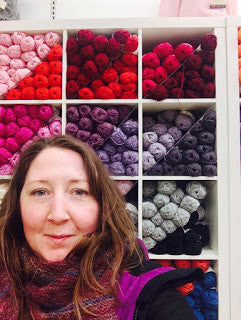

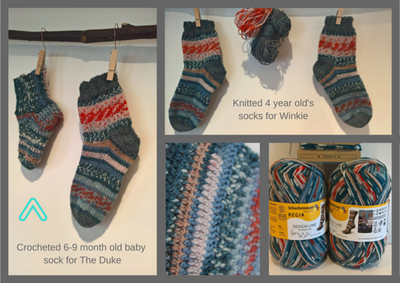
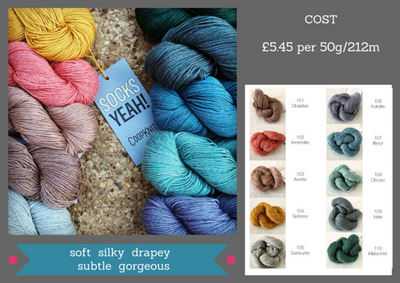
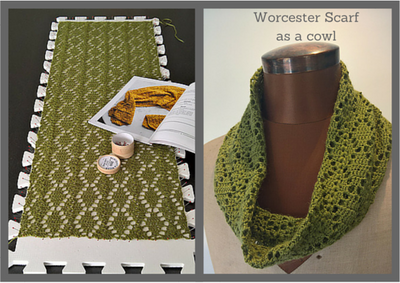
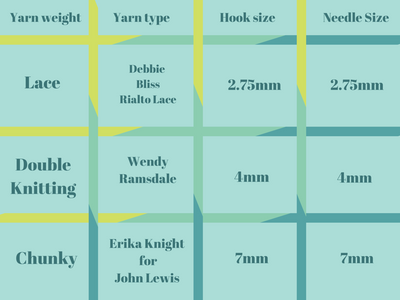
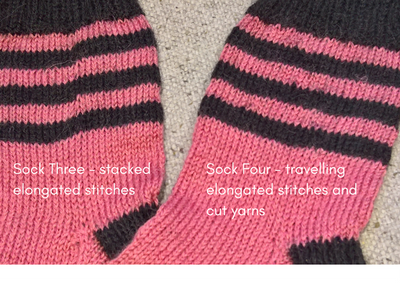
Here’s I’ve found re. your request about vegan handbags.
[url=]https://wtvox.com/fashion/vegan-handbags-bags-purses/[/url]
More on this marketplace:
[url=]https://wardrobeoftomorrow.com/sustainable-clothing-brands/[/url]
Let me know if I can be of further help.
Here’s I’ve found re. your request about vegan handbags.
[url=]https://wtvox.com/fashion/vegan-handbags-bags-purses/[/url]
More on this marketplace:
[url=]https://wardrobeoftomorrow.com/sustainable-clothing-brands/[/url]
Let me know if I can be of further help.
Dabbling with yarn dyeing – Provenance Craft Co
[url=http://www.gu7h171glp8v37j3g159fmcm65b33zz3s.org/]umdykoljox[/url]
mdykoljox http://www.gu7h171glp8v37j3g159fmcm65b33zz3s.org/
amdykoljox
Dabbling with yarn dyeing – Provenance Craft Co
abbpmhlcmix
bbpmhlcmix http://www.g630a803p1pjss06ch4x63yls61u74aes.org/
[url=http://www.g630a803p1pjss06ch4x63yls61u74aes.org/]ubbpmhlcmix[/url]
Dabbling with yarn dyeing – Provenance Craft Co
[url=http://www.go33vc10f75o1vew3ebj693t4lb949z9s.org/]udpjbhdctyg[/url]
adpjbhdctyg
dpjbhdctyg http://www.go33vc10f75o1vew3ebj693t4lb949z9s.org/